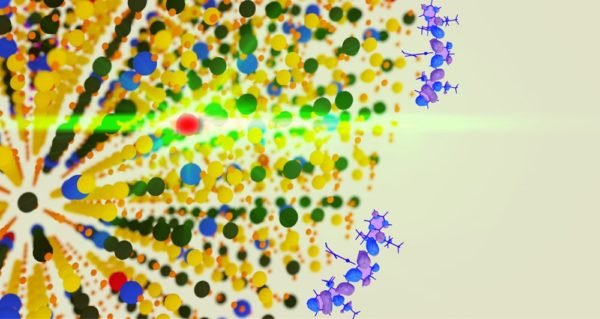
Most efficient solar panels
Photovoltaic installations are increasingly common in the industrial sector because they allow lower operating costs, and therefore greater competitiveness, but the choice of low-efficiency solar panels can reduce the expectation of success.
Below we explain what to consider when choosing and we give you some examples of the most efficient solar panels on the market. For this we have taken into account the efficiency that brands offer, the years of product warranty and most importantly, its price.
Most efficient solar panels
The first question we have asked ourselves to determine the most efficient solar panels is which of them offers the best performance according to the type of cell that forms them. These cells can be monocrystalline, polycrystalline and amorphous.
The answer is that monocrystalline modules have a higher efficiency , since the internal structure of the cells is more uniform and, therefore, has less resistance to electronic displacement. In addition, monocrystalline n-type cells have an electronic structure that favors a better use of the received light, which increases its performance.
In addition, monocrystalline n-type cells have an electronic structure that favors a better use of the received light, which increases its performance.
Tips to consider
Once established that monocrystalline modules offer superior efficiency, what advice should we take into account when buying?
It is advisable that the module be suitable for the installation in question. Therefore, it is necessary to combine correctly that the voltage and power levels are consistent with the equipment to which they are connected . The purpose is to try to mount the smallest number of solar panels possible (as long as technically and electrically feasible) since this way we can save on structure, assembly times, etc.
In addition, it is essential to choose solar panels properly, since a problem or defect in them involves having to carry out complicated repairs (in some cases very expensive). In most of the photovoltaic self-consumption installations, the panels are installed on the roof of the building in question (homes, industries, shops, farms, etc.). A defect in one or more modules supposes important setbacks for different reasons such as the replacement of the panel and the cost of the security measures to be implemented for the worker, as well as the necessary machinery for accessibility.
Therefore, it is recommended that the chosen photovoltaic module meets minimum quality that ensures the amortization of the installation in the expected time and in order to avoid all the problems that would arise in an eventual corrective action, in most cases of high cost. It is considered essential that it has the certification seal approved by an accredited body (TÜV or similar).
With this in mind, we will know if we need:
– 36 cell modules (we could reach 150Wp (Watts / Peak), 18V Vmp (Maximum Power Voltage), approx. 22.5V in Voc (Open Circuit Voltage) Price range: 0.64 – € 0.80 / Wp
– 60 cell modules (we could reach 300 Wp, 30V Vmp, approx. 38V in Voc., Price range: 0.37 – € 0.74 / Wp
– 72 cell modules (we could reach 350 Wp, 36V Vmp, approx. 44V in Voc., Price range: 0.37 – 0.72 € / Wp
Price and performance of solar panels

Another issue we have raised is the relationship between the price and performance of a photovoltaic module and its duration, that is, its real life.
As for the price / performance ratio, a solar panel generates an amount of energy during its useful life in a given installation, which will depend on its efficiency and the point of degradation it suffers.
This means that, if a module does not meet certain minimum requirements, it could reduce its production at a higher rate than the one taken into account in the study stage of the project, assuming self-consumption ratios that are less and less than initially estimated and that the amortization of the installation is triggered.
The higher the efficiency and the lower the annual degradation, the better the price / performance ratio . We will also have to take into account the prestige of the manufacturer, the highest peak power ratio per square meter (Wp / m2) and, of course, the type of panel.
The higher the efficiency and the lower the annual degradation, the better the price-performance ratio of a solar panel
Regarding its duration, the guarantee of the current solar panels is 25-30 years for monocrystalline and 20-25 years for polycrystalline. It is also true that there are facilities that have been operating since the 80s and have been in operation for up to 30 and 40 years, so in general, the real life of solar panels is unknown.
The 10 most efficient solar panels on the market
Below we highlight the 10 highest quality solar panels on the market in terms of price / efficiency:
List classified by number of cells (60 and 72) and percentage of efficiency of each of the panels.
This list highlights the excellent price of Yingli solar panels (€ 0.37 / Wp) and the highest performance of LG solar panels (up to 22%) in the 72 cell type.


They create more efficient solar panels that take advantage of infrared light
The solar energy is one of the renewable energies most used on the planet. However, the efficiency of the current photovoltaic solar panels is around 25%, and work is being done on materials that can double that figure . Now, new research could increase this efficiency by taking advantage of infrared light.
Converting infrared light to the visible spectrum: more efficiency for solar panels
Current panels only capture light from the visible spectrum, so the rest of the spectrum is wasted. Therefore, scientists at the Lawrence Berkeley National Laboratory have discovered that, by nanoparticles coated with special organic dyes, light near the infrared spectrum can be converted into visible light , which allows photovoltaic cells to cover a wider spectrum.
These upstream conversion nanoparticles (UCNP) contain lanthanide metal ions such as ytterbium and erbium . The ytterbium absorbs infrared light and sends it to the erbium, which returns it as visible green light. If the nanoparticles were coated with an organic dye, the efficiency increased, but they degraded almost immediately when exposed to light.
Although at first they did not know why this happened, they finally discovered that the lanthanides in the particles cause the dyes to enter a state in which they can join several photons into a single photon of visible light , transferring the energy of the lanthanides more efficient. Thus, they act as a kind of light concentrators.
They can be used in current solar panels
In the following image we see how a representation of how, after absorbing infrared light, an erbium atom (in red) emits it as visible green light. The blue and purple particles are the dyes that improve the process.

Once they understood the mechanism, they designed new nanoparticles that would enhance this effect , increasing the concentration of lanthanides from 22 to 52%. With this, they discovered that these nanoparticles were 33,000 times brighter and 100 times more efficient than if they did not have the dye.
The next step will be to stabilize the use of dyes , since they are currently very unstable with ambient air. In fact, they had to perform the experiments in a nitrogen environment, so it will be necessary to design protective layers for the nanoparticles.
Once they are able to stabilize them, they can be used in the solar panels that currently exist , since they are transparent. This would allow a solar panel that you already have at home to increase its efficiency, since the reception technology is the same, but more light will arrive (as if the sun shines twice, or there are two suns). In addition, new solar panels would also arrive that already included these layers.




